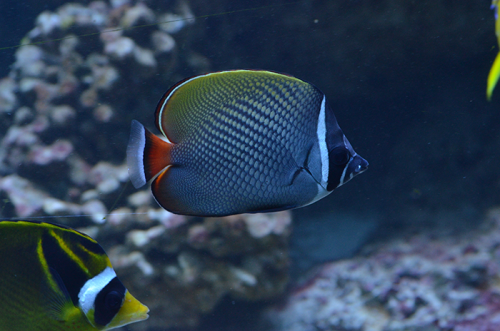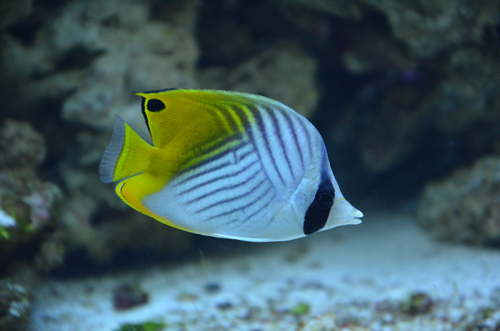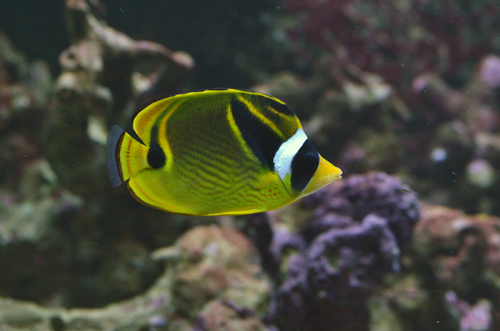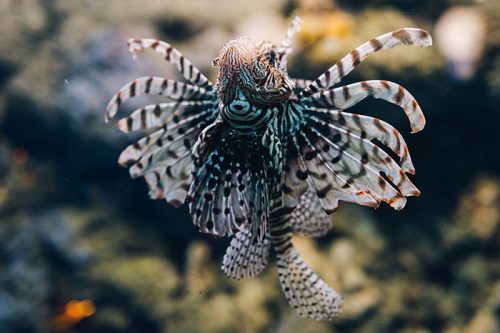 How can we threaten animals living in the seas? Can only the shark be a threat? Should we be afraid of the snails? Which marine animals are considered the most dangerous to man? Is the sea wasp an insect? These and other questions will be answered in about 45 minutes, in presentation full of curiosities. During the lecture there is a possibility to fill educational materials.
How can we threaten animals living in the seas? Can only the shark be a threat? Should we be afraid of the snails? Which marine animals are considered the most dangerous to man? Is the sea wasp an insect? These and other questions will be answered in about 45 minutes, in presentation full of curiosities. During the lecture there is a possibility to fill educational materials.
Akwarium Gdyńskie
-
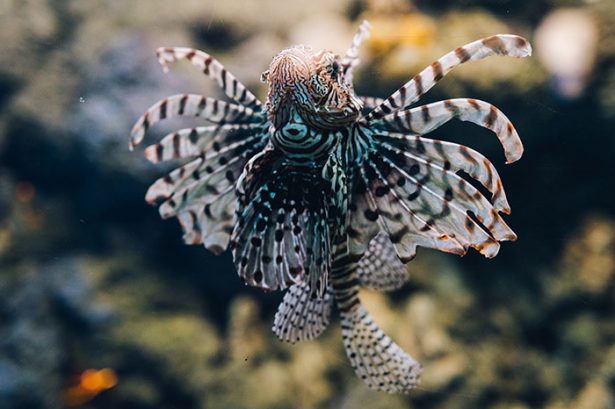
Dangerous marine animals
-
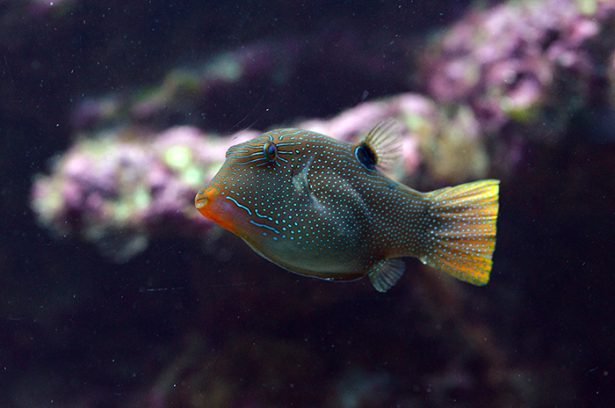
Spotted sharpnose
order: Tetraodontiformes
family: tetraodontidaeCanthigaster solandri
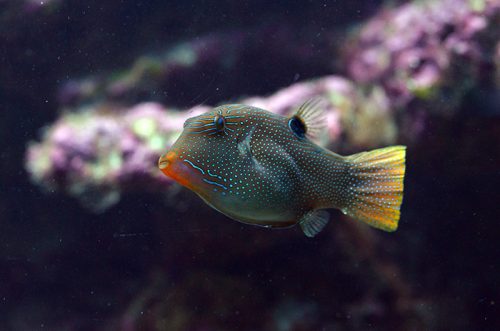 This species is found in the Indo-Pacific, from East Africa east to the Tuamotu Archipelago, north to the Ryukyu Islands, and south to New Caledonia and Tonga. Its presence has also been reported in Hawaii, but is not numerous. Populations from the Philippines, Indonesia, New Guinea, Queensland and Belau differ slightly in coloration. Species from the Pacific seem to be slightly darker compared to those in the Indian Ocean. Puffer inhabits a variety of habitats, including open sea areas, vegetated areas, lagoons, coral reefs and artificial reefs. Its depth range is 10 to 36 meters. Like the other representatives of the genus Canthigaster, it is rather small, it only grows up to 12 cm in length. It feeds mainly on thread-like algae, but also sponges, corals, tunicates, molluscs, echinoderms, polychaetes and crustaceans. It uses its four impressive, strong teeth for nutrition. Teeth grow all their lives, and to grate them, the Spotted sharpnose eats hard food. It is often seen in pairs, sometimes in small groups. It is an optional monogamist, which means that the male is forced to associate with one female due to the limited number of individuals. They are oviparous. Females build nests to lay their eggs in and look after them. This fish has an interesting coloration. Its body is greenish brown and is covered with many light blue spots and lines. Bright colors inform predators about its toxicity. It makes characteristic noises.
This species is found in the Indo-Pacific, from East Africa east to the Tuamotu Archipelago, north to the Ryukyu Islands, and south to New Caledonia and Tonga. Its presence has also been reported in Hawaii, but is not numerous. Populations from the Philippines, Indonesia, New Guinea, Queensland and Belau differ slightly in coloration. Species from the Pacific seem to be slightly darker compared to those in the Indian Ocean. Puffer inhabits a variety of habitats, including open sea areas, vegetated areas, lagoons, coral reefs and artificial reefs. Its depth range is 10 to 36 meters. Like the other representatives of the genus Canthigaster, it is rather small, it only grows up to 12 cm in length. It feeds mainly on thread-like algae, but also sponges, corals, tunicates, molluscs, echinoderms, polychaetes and crustaceans. It uses its four impressive, strong teeth for nutrition. Teeth grow all their lives, and to grate them, the Spotted sharpnose eats hard food. It is often seen in pairs, sometimes in small groups. It is an optional monogamist, which means that the male is forced to associate with one female due to the limited number of individuals. They are oviparous. Females build nests to lay their eggs in and look after them. This fish has an interesting coloration. Its body is greenish brown and is covered with many light blue spots and lines. Bright colors inform predators about its toxicity. It makes characteristic noises.How does the puffer defend against predators?
The Spotted sharpnose creates a symbiotic relationship with the bacteria Pseudoalteromonas tetraodonis, which produce tetradotoxin – a potent neurotoxin. Fish accumulates the toxin in the skin, gonads and liver. The degree of animal toxicity depends on the geographical area and the season of the year. When it is stressed or dies, it releases a toxin into the water. Despite its toxicity, it is consumed by people, but it must be prepared in certified restaurants. Inappropriate preparation of the fish may result in the death of the person who consumed it. Another form of defense against predators is to increase in body size. When it feels threatened, it pumps water into its stomach, thereby increasing its volume, which in most cases discourages a predator which is unable to swallow it. An additional form of protection is the presence of a ‘false eye’ located at the dorsal fin. Its task is to confuse predators about the actual location of the fish head.
-
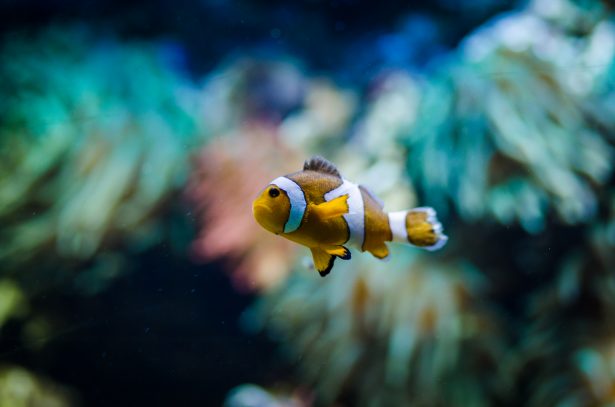
Ocellaris clownfish
Order: Perciformes
Family: PomacentridaeAmphiprion ocellaris
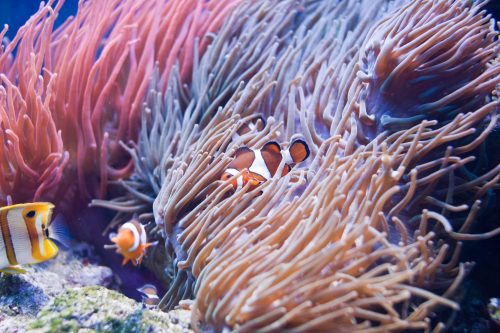
Certainly Andrew Stanton contributed to the promotion of this fish, seeking inspiration for his new work, looking for a picture that would embody the magic of the ocean. While viewing photos of marine fauna, he came across two individuals of the spotted clown who live in symbiosis with anemones in their natural environment, which makes them a grateful object for observation both at home and in many zoos.
When breeding clownfish, remember about sex variability. Within the herd, the largest and dominant individual becomes a female, and the next largest in size becomes male. Other fish persist in asexual form and stop their growth. Sex dimorphism is very pronounced in this fish. When the female dies, the mature male will change sex and become a female, and the next size individual matures sexually and becomes male. If in the breeding conditions a pair or several clownfish of the same size appears in the tank, the time is required for the emergence of the dominant individual due to competition in the group.
The female lays eggs in the chosen place, which are fertilized by the male. Spawning is associated with the phases of the moon and should take place about every 27 days. Mature couple in favorable conditions will spawn periodically every several days. The standard factor that stimulates fish to breed is high food quality, which should be diverse. Parents should not be separated from laid eggs because they remove impurities and aerate the eggs by fanning their fins, which protects them from mold. Adult fish should be left with eggs for as long as possible. The juveniles hatch after about a week and intensively feed. If an aquarist would like to control the hatching time to some extent, one can darken the aquarium, because in nature the hatching occurs after dark. Growth is very slow. Properly fed clownfish reach 3-4cm in size at 6-8 months of age. The success in raising young clowns lies in frequent but reasonable feeding with living food.
It is worth remembering to secure all filter inlets with a very fine plastic mesh or aquarium sponge so that increased water circulation does not lead to large losses in breeding. In larger aquariums (more than one species) other inhabitants of the tank can treat larvae and small fry as potential food.
The ocellaris clownfish is one of the best known species of the genus Amphiprion, thanks to the movie “Finding Nemo?” Clownfish live in close symbiosis with anemones. It has been proven that thanks to a certain ingredient in the clown’s mucus, it is protected against burns by anemones. If the fish moved away from the host, it could quickly become a victim of predators. For protection, clowns repay by keeping the coral in good condition.
-
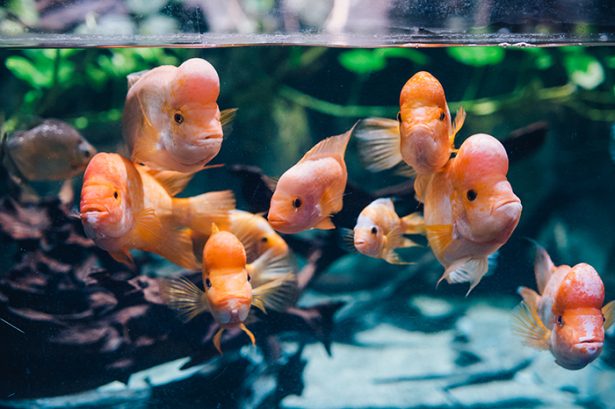
Midas cichlid
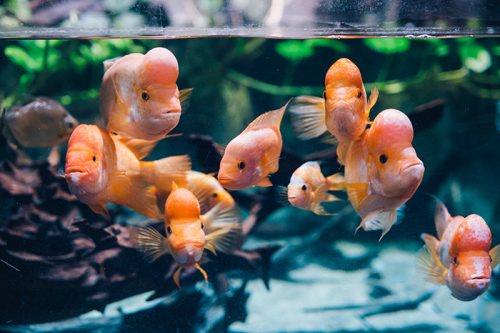 Amphilophus citrinellus
Amphilophus citrinellusThe Midas cichlid belongs to the cichlid family (Cichlidae) – freshwater fish (except for one marine species). Most species of this family resemble perch – a stocky body, slightly jagged. As the family name suggests, these are fish that are characterized by exceptional care for offspring. Also interesting are their adaptations in terms of seeking a partner for reproduction. Among this family we will find various sizes, shapes and colors. The range of occurrence of some species is limited to one lake (strongly developed endemism).
This freshwater fish in natural conditions usually has a less colorful coloration, however, most of them are bright orange and orange-red. Males appear with a tumor on the forehead, which indicates age and position in the herd. Cichlids reach a size of 25 cm. Couples of cichlids diligently guard their eggs and later offspring. While the female is guarding them, the male attacks every intruder who approaches them.
-
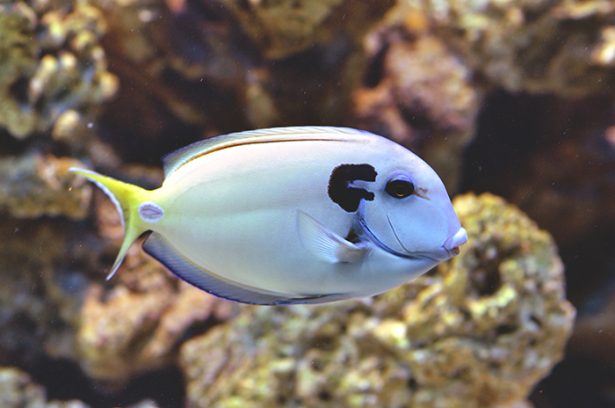
Acanthurus tenneti
It lives in the warm waters of the Indian Ocean on coral reefs, mostly in shallow waters of 1 to 25 m. It reaches a length of about 30 cm. It occurs both in flocks as well as alone. It feeds on benthic plants.
-
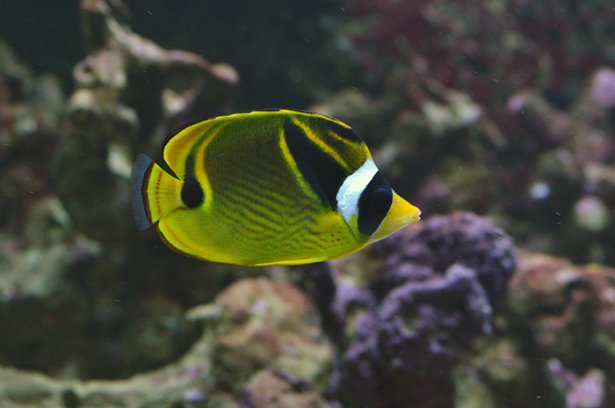
Butterlyfishes
Colorful representatives of the butterlyfishes (Chaetodontidae family) live among coral reefs, most commonly in the western Indo-Pacific. They differ in terms of color, but have common morphological features, such as laterally flattened body, characteristic fin shape, more or less elongated jaws. The shape of the mouth depends on the type of food consumed. They feed on small invertebrates, coral polyps, and algae.
Chaetodon collare Chaetodon auriga Chaetodon lunula Chaetodon lunula
The Raccoon butterflyfish is very easily recognizable due to the black mask he has, which is why he is often called a bandit. During the day, under natural conditions, it usually remains hidden, while at night it looks for food. His relatively large eyes are an adaptive effect to night life.
